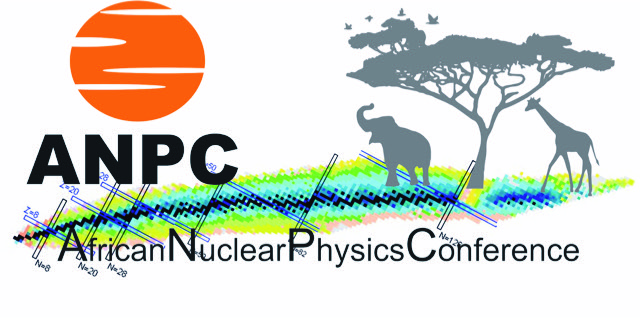Speaker
Description
The total deformation energy at the moment of neck rupture, for the heaviest nuclei for which spontaneous fission has been detected ($^{264-278}{\rm Hs}$, $^{268-280}{\rm Ds}$, $^{276-286}{\rm Cn}$, $^{285-287}{\rm Fl}$, $^{290-293}{\rm Lv}$ and $^{294}{\rm Og}$ ) [1,2], is calculated using the Strutinsky's prescription. The nuclear shapes just before scission are described in terms of Cassinian ovals defined for the fixed value of elongation parameter $\alpha$=0.98 and generalized by the inclusion of four additional shape parameters: $\alpha_1$, $\alpha_3$, $\alpha_4$, and $\alpha_6$. Supposing that the probability of each point in the deformation space is given by Boltzmann factor, the distribution of the fission-fragment masses is estimated. The octupole deformation $\alpha_3$ at scission is found to play a decisive role in determining the main feature of the mass distribution: symmetric or asymmetric. Only the inclusion of $\alpha_3$ leads to an asymmetric division [3].
In this situation, the scission configuration has one almost spherical fragment with $A_L \approx$136 and one extremely deformed (neck shaped) complementary fragment. After rupture of the first neck (with smallest radius), the light spherical fragment is separated from the rest. The question is: will the heavy deformed fragment undergo a second fission or will it recover a more or less compact shape? In other words: is the fission of SHE binary or sequential-ternary? To give an answer, we study the potential energy surface of this complementary fragment in order to find its saddles and valleys. The position on this map of its shape at the scission of the SHE gives a hint about its post scission evolution. Such a study has been carried out for the scission configurations of $^{284}{\rm Cn}$, $^{286}{\rm Fl}$ and $^{294}{\rm Og}$. In order to study more general trends, detailed calculations are performed in the unexplored region of super-heavy nuclei: the even-even ${\rm Fl}$ (Z=114), ${\rm Lv}$ (Z=116), ${\rm Og}$ (Z=118) and (Z=$126$) isotopes. For these nuclei, the most probable mass of the light fragment has an almost constant value ($\approx$136) like in the case of the most probable mass of the heavy fragment in the actinide region. It is the neutron shell at 82 that makes this light fragment stable over such a large series of elements. Naturally, for very neutron-deficient isotopes, the mass division becomes symmetric when N = 2$\times$82. In this way, the fission process of super-heavy nuclei smoothly joins the heavy-actinide systematics (from ${\rm Fm}$ to ${\rm Sg}$) where the neutron-rich isotopes show a symmetric mass division [4].
Finally we examine the often discussed possibility that SHE decay preferentially by cluster emission (i.e., $^{208}{\rm Pb}$ + the rest).
[1] Yu. Oganessian, V. Utyonkov, Rep. Prog. Phys. $\rm78$ (2015) 036301.
[2] F. P. Hessberger, Eur. Phys. J. A $\rm53$ (2017) 75.
[3] N. Carjan, F. Ivanyuk, Yu. Oganessian, Nucl. Phys. A $\rm968$ (2017) 453.
[4] N. Carjan, F. Ivanyuk, Yu. Oganessian, G. Ter-Akopian, Nucl. Phys. A $\rm942$ (2015) 97.

